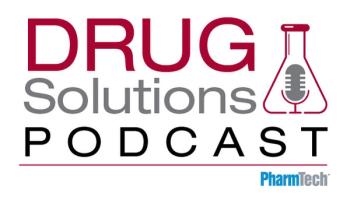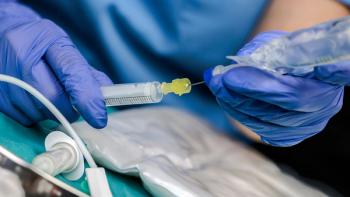
In this episode, Ana Ladino provides an update on the acceptance of a novel excipient onto CDER’s pilot program.

In this episode, Ana Ladino provides an update on the acceptance of a novel excipient onto CDER’s pilot program.

To prepare for emerging mRNA technologies, it is necessary to adapt fill/finish and cold chain capabilities.

This self-emulsifying system improves the miscibility and dispersibility of formulations in aqueous environments and may improve API solubility.

Epinephrine is a critical medication used during life-threatening conditions that can affect any age and any person.

A REMS document is a part of a REMS required by FDA and establishes the goals and requirements of the REMS.

Unique solutions are required to protect inherently unstable messenger RNA.

Biotech startup, Cradle, has raised $5.4 million in seed funding with an AI-enabled design platform that allows for the synthetic building of cell factories to produce proteins.

High-concentration injectable formulations present unique challenges.

The state of oral solid dose manufacturing is influenced by new approaches, novel technologies, and the structural evolution of the raw materials market.

FDA has accepted Ashland’s Viatel bioresorbable mPEG-PDLLA pharmaceutical excipient into the FDA Novel Excipient Review Pilot Program.

Roquette has launched excipients PEARLITOL CR-H and PEARLITOL 200 GT.

The author discusses some new applications of TPGS in the pharmaceutical field that should see this versatile excipient retain its place in the drug formulators toolbox.

CBER maps modernization plan to handle surge in research and applications.

Numerous benefits will eventually lead to large-scale applications in pharmaceutical manufacturing.

Awareness of recently implemented—or ongoing—advances by the pharmacopoeias can help biotherapeutic manufacturers remain compliant with current requirements.

Roquette’s acquisition of Crest Cellulose is designed to reinforce its presence in India and other countries in Asia.

Pharmaceutical Technology spoke with Andrew Anderson, Global Head Strategic Account Management and Mary Todas, Director Technical Development and Regulatory Affairs, both with Pfizer CentreOne, about best practices for API quality.

Synthego has launched new engineered cell libraries to validate targets for quicker drug discovery timelines.

Pharmaceutical Technology spoke with Niamh Lynch, Executive Director, Global Head of Quality, Lonza Small Molecules, Basel about best practices for API quality and the impact of the nitrosamine contamination situation.

The nitrosamines contamination in “sartan” drugs emphasized the importance of risk assessment in the manufacture of active pharmaceutical ingredients.

This article reviews sources of excipient variability, including raw materials and processing, both of which may vary from supplier to supplier and from plant to plant for a single manufacturer.

Further advances in construct design and manufacturing scalability are still needed.

Screening for apparent total nitrosamine content with a thermal energy analyzer offers a rapid way of identifying contaminated drug products.

Pharmaceutical Technology Europe spoke with representatives from the European Directorate for the Quality of Medicines & Healthcare (EDQM) about API quality from their perspective.

Novasep-PharmaZell will increase API production capacity at its Mourenx site with €7.3M investment.